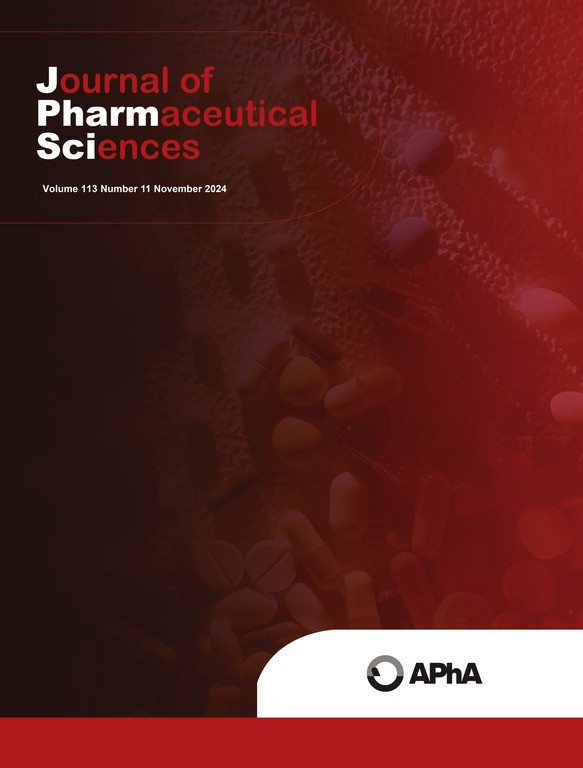Elucidation of the capping mechanism during the high-speed tableting process based on FEM simulation and fracture mechanics analysis
IF 3.7
3区 医学
Q2 CHEMISTRY, MEDICINAL
引用次数: 0
Abstract
Capping is a phenomenon in which the cap of a tablet separates from the bonding area, thereby presenting a significant problem in tablet production. The compression speed is an important factor that affects the occurrence of capping. Capping is a phenomenon in which the tablet cap separates from the band of the tablet. However, the effect of compression speed on capping has not yet been fully elucidated. In this study, numerical analyses were performed using the finite element method (FEM) with the Drucker-Prager cap and Perzyna models at 40 mm/s to further understand the effect of compression speed on capping occurrence. The calculated loading curves agreed with the experimental curves at different tableting speeds. Moreover, the simulation results confirmed that the stress distribution inside the tablet became more non-uniform with increased compression speed. Additionally, we aimed to develop a prediction method for capping tendency using FEM simulation. Predicting the capping tendency by comparing the residual stress and tablet strength at the edge of the tablet is challenging. On the other hand, accurate predictions were achieved by comparing the stress intensity factor with the fracture toughness of the tablets, based on fracture mechanics principles. Our concept of predicting capping tendencies offers valuable insights for advancing research on the tableting process.

基于有限元模拟和断裂力学分析,阐述了高速压片过程中的旋盖机理。
封盖是一种现象,其中片剂的封盖从粘合区域分离,从而提出了片剂生产中的一个重大问题。压缩速度是影响旋盖发生的重要因素。封盖是一种现象,片剂的封盖从片剂的带分离。然而,压缩速度对旋盖的影响尚未完全阐明。本研究采用40 mm/s的Drucker-Prager帽和Perzyna模型,采用有限元法进行数值分析,进一步了解压缩速度对帽盖发生的影响。在不同压片速度下,计算的加载曲线与实验曲线吻合较好。此外,模拟结果证实,随着压缩速度的增加,压片内部的应力分布变得更加不均匀。此外,我们的目标是建立一种基于有限元模拟的旋盖趋势预测方法。通过比较片剂边缘的残余应力和片剂强度来预测封盖趋势是具有挑战性的。另一方面,根据断裂力学原理,将应力强度因子与片剂的断裂韧性进行比较,得到了准确的预测结果。我们预测封盖趋势的概念为推进压片过程的研究提供了有价值的见解。
本文章由计算机程序翻译,如有差异,请以英文原文为准。
求助全文
约1分钟内获得全文
求助全文
来源期刊
CiteScore
7.30
自引率
13.20%
发文量
367
审稿时长
33 days
期刊介绍:
The Journal of Pharmaceutical Sciences will publish original research papers, original research notes, invited topical reviews (including Minireviews), and editorial commentary and news. The area of focus shall be concepts in basic pharmaceutical science and such topics as chemical processing of pharmaceuticals, including crystallization, lyophilization, chemical stability of drugs, pharmacokinetics, biopharmaceutics, pharmacodynamics, pro-drug developments, metabolic disposition of bioactive agents, dosage form design, protein-peptide chemistry and biotechnology specifically as these relate to pharmaceutical technology, and targeted drug delivery.

 求助内容:
求助内容: 应助结果提醒方式:
应助结果提醒方式:


